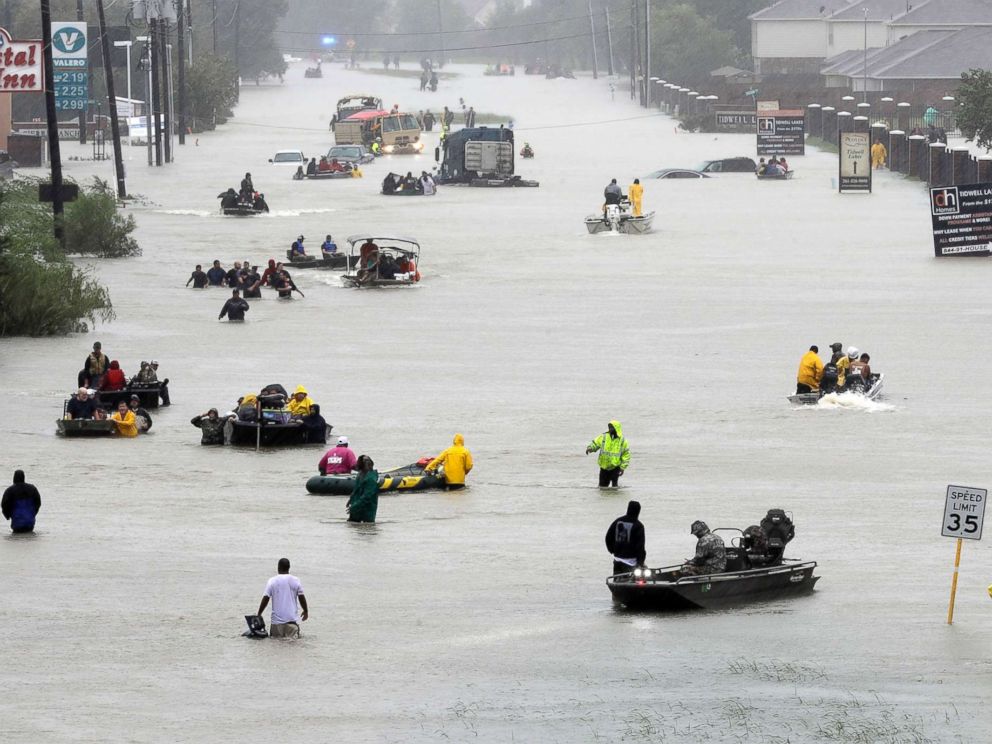The flooding caused by hurricane Harvey’s torrential rainfall continues and is in many cases worsening, with it being termed “catastrophic” and the worst rainstorm in American history.

Hurricane Harvey flooding in Houston – Photo from ABC News
Flood losses to residential homes are of course dealt with by the National Flood Insurance Program (NFIP), where coverage has been purchased and that means a significant hit to the NFIP is expected, perhaps enough to see its recently bought $1 billion of reinsurance cover come into play.
Floodwaters from hurricane Harvey are set to peak in the coming days, and the exposure of the NFIP in the region means that the reinsurers that backed its first visit to the market for coverage in January, when it bought $1 billion of protection, may find themselves paying out once the final bill is understood.
Risk modelling firm AIR Worldwide said that only around 20% of homeowners in the region have flood insurance with the majority being NFIP flood policies.
But, demonstrating the amount of exposure that equates to, in Harris County, which includes the city of Houston, the NFIP holds more than 240,000 policies, representing more than $60 billion of exposures just in the one county of Texas.
So add in all the other Texan counties where flooding is being experienced and the NFIP’s exposure grows significantly.
AIR said that, “Harvey may well push the NFIP up against its borrowing limit of USD 30 billion and prompt action by lawmakers to reform the program, which is due to be reauthorized at the end of September.”
The NFIP is already close to $25 billion in debt and with the reauthorization already being debated and due soon it seems inevitable that lawmakers will err increasingly towards reform following the example Harvey is likely to set.
Some analysts and observers have estimated that the NFIP could face tens of billions of losses from hurricane Harvey flooding and a significant number believe that Harvey could be the biggest ever single storm flood loss that the NFIP faces.
That is just the type of scenario that reinsurance is designed to respond to and the NFIP, which purchased a $1.042 billion policy that transferred some of NFIP’s financial risk to a panel of 25 reinsurers at January 1st 2017, may be able to call on those reinsurers for assistance with paying its claims from Harvey.
The $1.042 billion of reinsurance covers 26% of the NFIP’s losses from an attachment point of $4 billion up to $8 billion arising from a single flooding event. Hurricane Harvey will be deemed a single event, we’d imagine, so all rainfall and resulting riverine flooding would be included.
The NFIP said at the time of its reinsurance purchase in January that there was a 17.2% chance of a loss high enough to trigger its reinsurance in 2017.
For comparison, Hurricane Sandy saw the NFIP shoulder $8.3 billion of losses in October 2012 and Hurricane Katrina $16.3 billion in August 2005.
It seems, given the catastrophic and ongoing flood event that has unfolded in Texas and particularly the Houston area, that a $4 billion NFIP loss would be easy to reach from Harvey, which would mean reinsurers paying out on some of their obligations to the NFIP.
It’s expected that all the usual major reinsurer names will have participated in the NFIP reinsurance program this year.
It’s too early for any estimates of NFIP losses to be deemed accurate, but the chances of the NFIP’s reinsurance paying out are deemed high by some sources we’ve spoken with in the reinsurance underwriting and broking community. It will take some days and weeks for the final bill to become clear.
There is also the potential for the private insurance and reinsurance industry to take a relatively significant flood related loss, despite the existence of the NFIP, as commercial flood policies in cities like Houston could payout, with commercial flood risks often backed by strong reinsurance arrangements.


